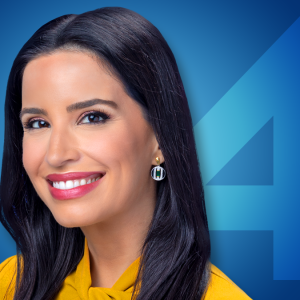MILWAUKEE — A course at UW-Milwaukee has left many students logging off of online lectures in tears. It is not over how hard it is, but rather the hard truth they are learning about Native American history.
UW-Milwaukee professor Michael Wilson is not just highlighting the atrocities inflicted on Native Americans throughout history, but also their incredible resiliency.
We found it a poignant moment to highlight his Native American Studies class at UW-Milwakee, this Native American Heritage Month.
Professor Wilson says there are eleven tribal nations in the state of Wisconsin, “Some came from the east coast, like the Oneida came from New York,” adding, “There are a couple who historically have been here, like the Menomonee and Ho-Chunk."
Professor Wilson delves into what is often overlooked in our history. This includes the true account of Thanksgiving between the pilgrims and Wampanoag Tribe, saying “They were rewarded for helping the pilgrims by being completely decimated and sold into slavery. It's a very unhappy history…”
The reactions from his students who were born in roughly 2001 or 2002 are eye-opening. He explains, “Some of them are angry that they weren’t taught this before. They were unhappy, because they think this should be known.”
Despite this, Professor Wilson reminds us the Wampanoag are still there to this day, “So indigenous people are survivors!”
UW-Milwaukee freshman John Myers from Manitowoc has a passion for Native American history. He shared his excitement about this course, “I don’t remember learning as much as I have in the two months that I have been in the class its been very informative.”
“I just think about my class and how important it was for them to learn accurate information about American Indian people and to learn the true stories of what happened,” adds Professor Wilson.
This includes the assimilation process where Native American children were ripped from their families and sent to boarding facilities, “So that they would be less attached to their Indian Nations, and more willing to become American citizens,” Wilson explained, emphasizing this happened all over the state of Wisconsin (Photo courtesy below: WisconsinHistory.org).

Despite their own struggles throughout history, Native Americans have stood up for other cultures as well, in may ways we may not realize, “Some tribal nations were involved in the Underground Railroad so there were some positive things and there were less positive histories…”
Just recently, members of the UW-Milwaukee Native American Studies Faculty have also made appearances in front of George Floyd's mural in Milwaukee to honor him (Photo Courtesy: Professor Kimberly M. Blaeser).

What is harder to teach is the generational trauma Native Americans grapple with to this day from what happened to their ancestors. But Professor Wilson, who is a citizen of the Choctaw Nation in Oklahoma believes that all indigenous nations will be stronger together in the years to come.
Professor Burrows delves into many other issues about cultural appropriation in his class, he says that goes all the way back more than 300 years, “We look at the history of the mascot issue representation that goes all the way back from the 1700’s. Representation of Indian people as fighters, when in fact many indigenous people were extremely peaceful [and] have profound philosophies of peace. That’s not understood by a lot of people. They see Indians as fighters and warlike when they have many powerful philosophies of peace.”
He adds his in his teaching about mascot names today, “The mascots today I think reflect the old histories in a lot of ways. It’s useful for people to know to let them go. It’s probably time.”
He adds, “We talk about cultural appropriation. People borrow cultures all the time, but there are ways to do it well. There are ways to not do it, especially with people's cultures. You want to be really respectful of those kinds of things.”
Freshman John Myers was baffled to learn, “Settlers would give Native Americans allotments for chunks of their land which they could therefore own for free. But only gave them chunks of landless desirable for farmland. And they made the allotments for only 25 years. So once that 25 years was up, if the Native American that owned that land was not able to pay a loan, it would most likely always go to a white settler. So that was another unsettling thing to understand about society in America. [Professor Wilson] mentions the Green Bay area once had allotment areas for Native Americans.”
To learn more about American Indian Studies faculty at UW-Milwaukee, click here.




